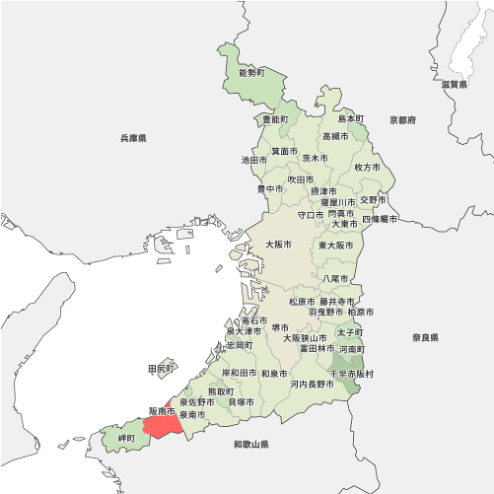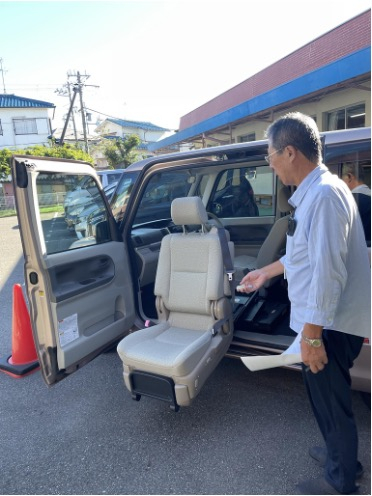NEWS
Jun 26, 2025
- Activity Report
Our Effort Toward the SDGs
-
Hello! We are taking the Social Innovation Course at Osaka Metropolitan University!
We believe many of you have heard of the term "SDGs," but some may still wonder, “What can I actually do?”
Through sharing our projects, we hope you’ll discover something new—even just a little.
-
The Key to the Solution
Have you ever heard of the SDGs Wedding Cake Model?
The SDGs Wedding Cake Model places Goal# 17 at the top of the cake, supported by three interconnected layers: The second layer from the top is the economic layer, followed by the social layer, and the bottom layer is the biosphere layer. This model illustrates how all of the SDGs are deeply interconnected.The challenges we face cannot be solved in isolation—they are all related. That's why we need to come up with integrated and comprehensive solutions.
With this in mind, we would like to introduce some of the activities we've carried out based on this approach.
-
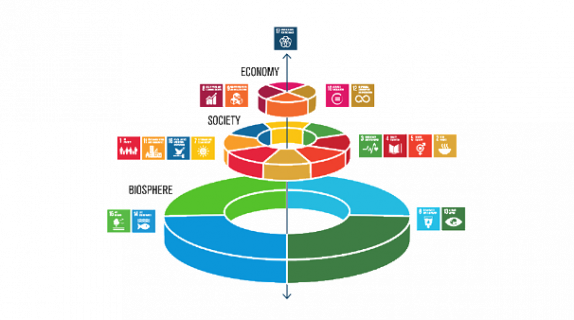
The SDGs Wedding Cake Model
credit: Azote Images for Stockholm Resilience Centre, Stockholm University
-
Our Involvement with Hannan City
Since 2018, the Social Innovation Course has been conducting intensive course programs in Hannan City, Osaka, as a field site. Over time,we have been working on social innovation aimed at social implementation.
As we researched more about Hannan City, we discovered a company that produces an eco-friendly material called “Moku-ito” (wood fiber), and we also learned about the various welfare services being carried out in the city.
This led us to think that by connecting these two aspects, we could contribute to solving social issues.
-
-
What is Mokuito
Mokuito plays a central role in our project—but what exactly is it?
Mokuito is a type of thread made by reusing thinned wood, which is wood cut down as part of forest management.It’s an eco-friendly material that gives new life to resources that would otherwise go to waste.
Thinning is a forest management practice—like maintenance for forests. When forests are left without proper thinning, they can become a major cause of disasters such as landslides.
From an environmental perspective, thinning is an essential process. If the wood that comes out of thinning can be used as a resource, we can achieve both productive activity and environmental conservation.
-
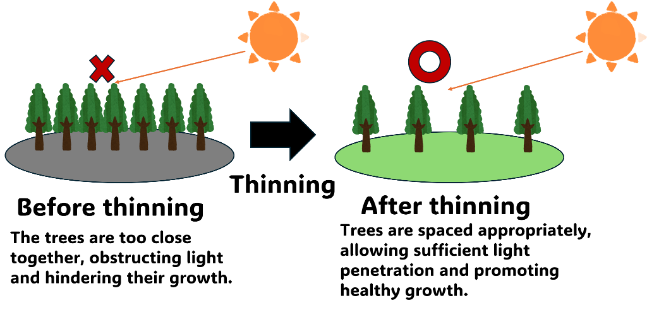
-
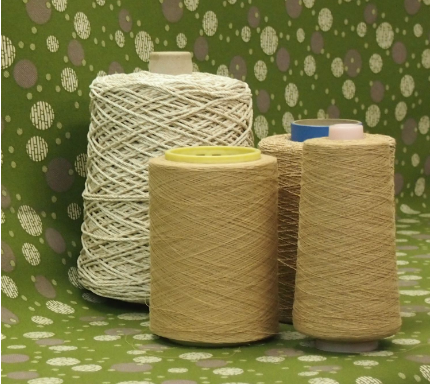
-
Ways to Use Mokuito
We thought about how to utilize this Mokuito thread. With advice and support from people in Hannan City, we explored various ideas and decided to make aprons using “Washi-no-nuno” cloth made from wood thread to donate to children’s cafeterias in Hannan City. This is how the “Co-lorful Apron Project” began.
What is “co-loful Apron Project”
The Co-lorful Apron Project is an event where we create aprons from scratch together with children in Hannan, contributing to the local community. Children in Hannan City made aprons to express their gratitude, and will present them to local children's cafeterias.
-
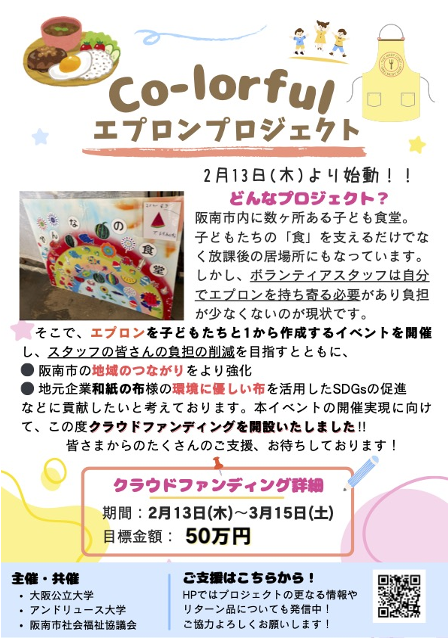
-
Children’s Cafeteria
Children’s cafeterias not only support children’s nutrition but also provide a safe place for them to spend time after school. While these cafeterias play an important role in the community, they face several challenges.
First, volunteer staff members working in the kitchen are required to bring their own aprons, which can be a burden. Second, there are few opportunities for children to express their gratitude to the volunteers. Third, there is a lack of sustainable support systems.
Through the “Co-lorful Apron Project”, we aimed to address these issues while strengthening community ties in Hannan City and contributing to the SDGs.
There are seven children’s cafeterias in Hannan City. Our Co-lorful Apron Project took place at Nishitoritori Minna no Shokudo, a children’s cafeteria near the fishing port in Hannan City.
Interaction with International Students
In the Co-lorful Apron Project, students from Andrews University in the United States, that is our partner school, came to Osaka and participated as part of the event’s organizing team. They helped make aprons and joined us in visiting the children’s cafeteria, where they interacted with the children.
-
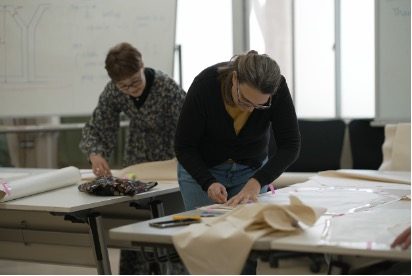
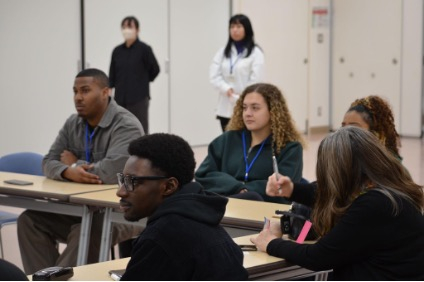
-
-
-
-
-
-
-
Crowdfunding
To make the Co-lorful Apron Project event possible, we conducted a crowdfunding campaign. Out of our goal of 500,000 yen, 29 people supported us, and the total amount raised was 245,500 yen.We showed our appreciation to the supporters by sending photos, videos, and other rewards. We are truly grateful to everyone who helped us.
Instagram and X account
We share our activities on Instagram and X (formerly Twitter)
-
-
-
-
Highlights from the Co-lorful Apron Project Event Day
On the day of the event, approximately 100 children participated. Together with the international students from the United States, all the children enjoyed playing with the Andrews’ students, drawing pictures with chalk, and sharing snacks that the students brought from America.
To involve the children in making the aprons, they also helped by threading the apron strings.
-
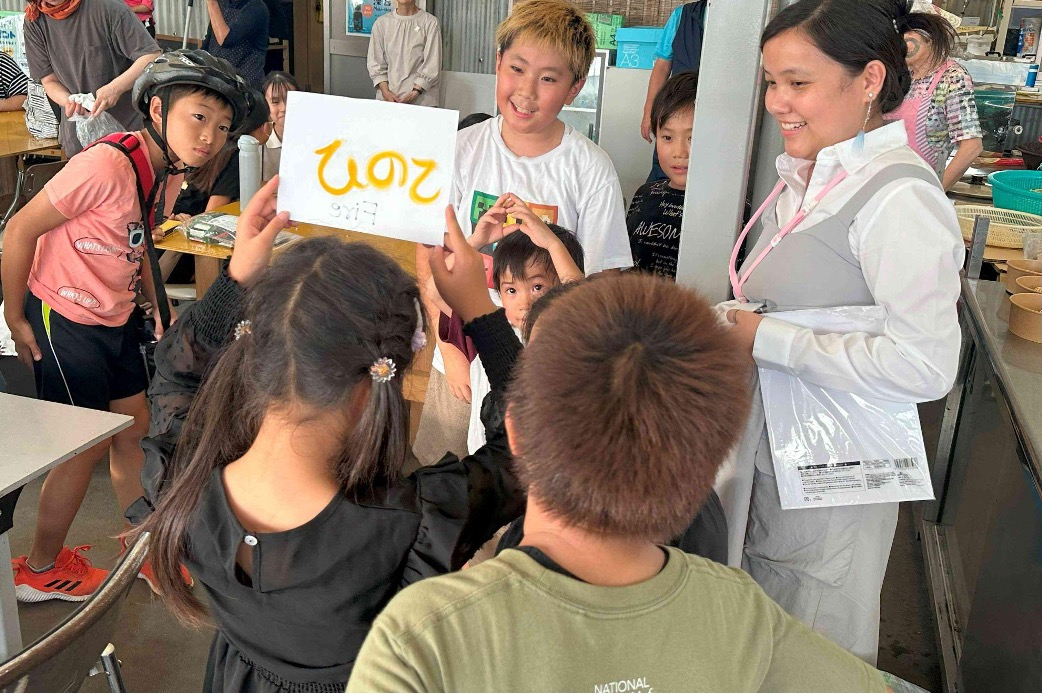
-
-
Proposal of the Osaka Model
The project we have carried out so far fit into the model we want to propose, called the Osaka Model. Simply put, the Osaka Model means that the economic cycle—composed of production and consumption activities—can itself become a path toward achieving the SDGs.
Traditionally, economic activities were seen as damaging the environment and communities in developing countries. However, the Osaka Model proposes a new perspective: contributing to the SDGs through economic activities.
For example, in our project:
- By turning thinned wood into Mokuito thread, forest maintenance progresses and the forest environment improves. Well-managed forests reduce the risk of disasters.
- Providing hand-maid aprons to children’s cafeterias helps revitalize the local community.
- Local production for local consumption supports sustainable production.
Through these efforts, we have contributed to SDGs Goals 11, 12, and 15.
As mentioned earlier, global challenges are interconnected and require complex solutions. That is why we want to spread the Osaka Model, which approaches economic, social, and environmental issues simultaneously.
- By turning thinned wood into Mokuito thread, forest maintenance progresses and the forest environment improves. Well-managed forests reduce the risk of disasters.
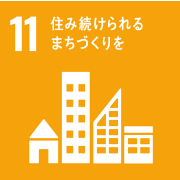
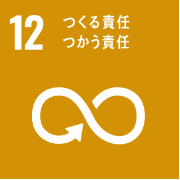
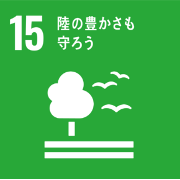
-
Finally in Closing
Thank you very much for reading this far. We hope that our activities have inspired you in some way.
Why don't you all take the first step by doing something you can do in your local community?
